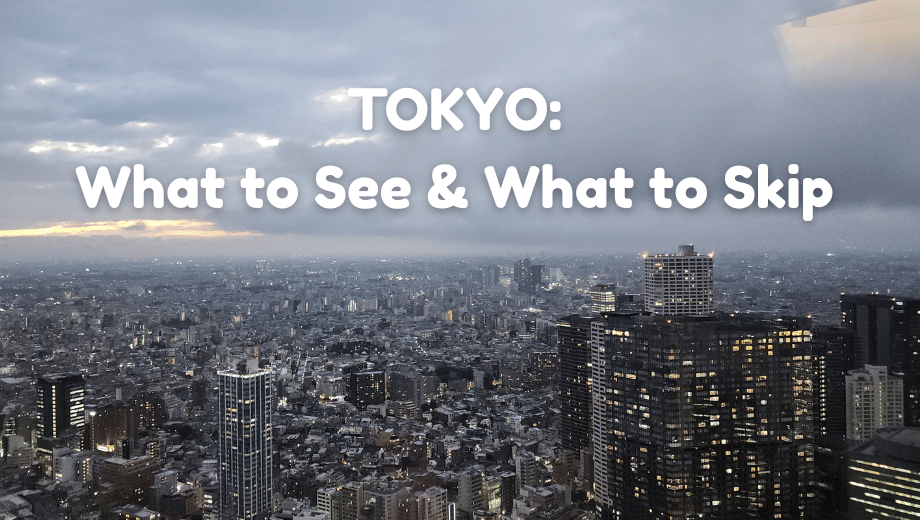Many weeks of planning and packing brought me to Japan for a whirlwind trip, and now that the dust has settled, I’ve got the insider’s report. I came ready, but Japan still managed to surprise and delight (and occasionally baffle).
I’ve broken down my journey into the must-do, fascinating experiences that made the planning totally worth it, and the ‘you can probably skip this’ moments to save you time, money, and maybe a little sanity.
Tokyo
Kappa Hunting in Kitchen Town
In addition to blocks and blocks of kitchen items (dishes, cookware and everything kitchen adjacent), it’s fun to go ‘Kappa Hunting’. Kappas are the official mascot of Kitchen Town.
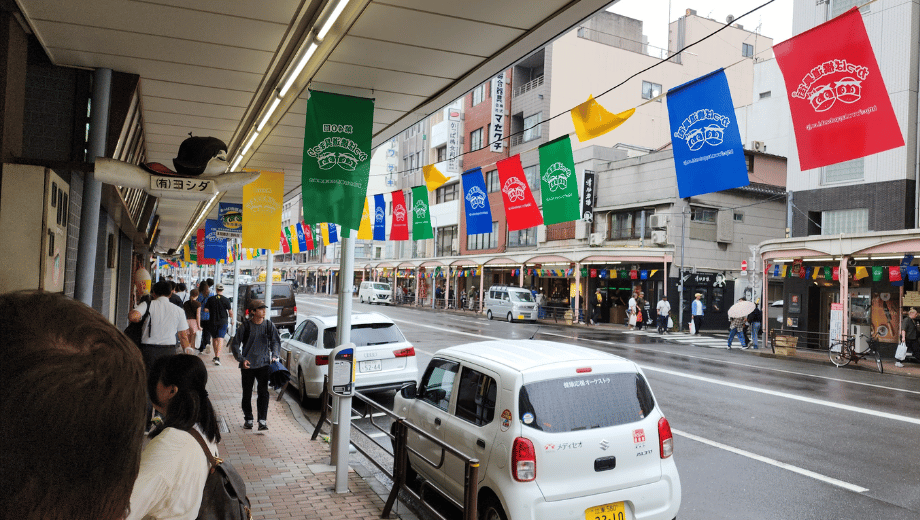
Kappabashi is named after the legendary Japanese water spirit, the Kappa.
The Legend of the Kappa: The Kappa is a mythical creature, typically described as a mischievous, amphibious humanoid with a shell on its back and webbed hands and feet. Its most distinguishing feature is a water-filled depression (a “dish” or “plate”) on the top of its head, which is the source of its power. If the dish is dried or spilled, the Kappa becomes weakened and harmless. They are said to live in and around water bodies like rivers and ponds. While they are often portrayed as tricksters that might pull people or animals into the water, they are also sometimes associated with good deeds and are said to be very polite and keep promises if their water dish is kept full.
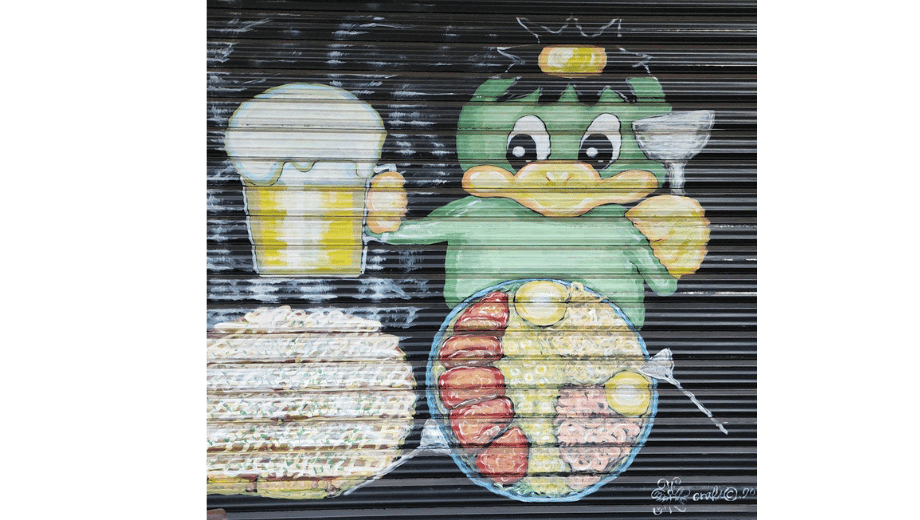
The town is also within walking distance of the local fish market.
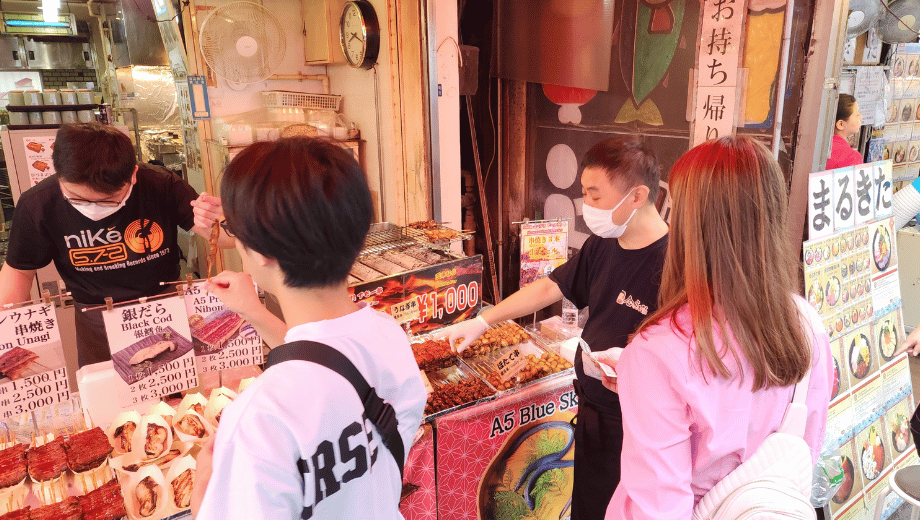
Have breakfast at the Tsukiji market and grab some cheap and tasty eats, and then roam Kappabashi and shop for cute kitchenware. You’ll find the prices can vary widely, so make sure to pay attention! There are cute little Kappas everywhere, and some shops even sell Kappa-themed souvenirs. I picked up a coin purse for all my yen with a Kappa on it, and it’s one of my favorite souvenir finds from the trip!
Just Hype – Skip It
I bought into the hype and went to the Cup of Noodle museum in Tokyo to make our own Cup of Noodles to take home. While it was a fun experience, it was so crowded and we had to wait a long time. I could have missed this and been okay.
Unexpected Tourist Trap That Was Fun
DisneySea (on the Tokyo Bay side) sells evening tickets. The park is even more magical at night and has fireworks, lights, music, and more. Although the tickets are only good for four hours (5-9 p.m.), I would recommend this as the perfect amount of time to see this stunning park.
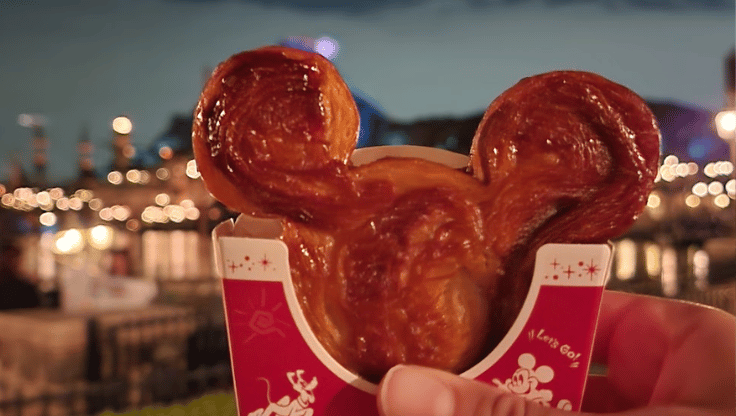
We fit in three rides. Right before closing, you’ll find all of the rides are empty, so if there is a crowded ride you have your heart set on, try to get in position around 8:30 p.m.
Kaiseki Meal is a Must
Available everywhere in Japan. Tabelog is the preferred app that rates restaurants in Japan, but I also leaned into Google for my reviews. Just go with the flow on this one. Even with our limited Japanese, we were able to skip or switch one item. We are Pescatarians, so we were able to skip the chicken and beef. Granted, beef or chicken was only to appear in maybe 2 of the 12 items, so it wasn’t a big ask. Both Kaiseki meal places obliged, no problem.
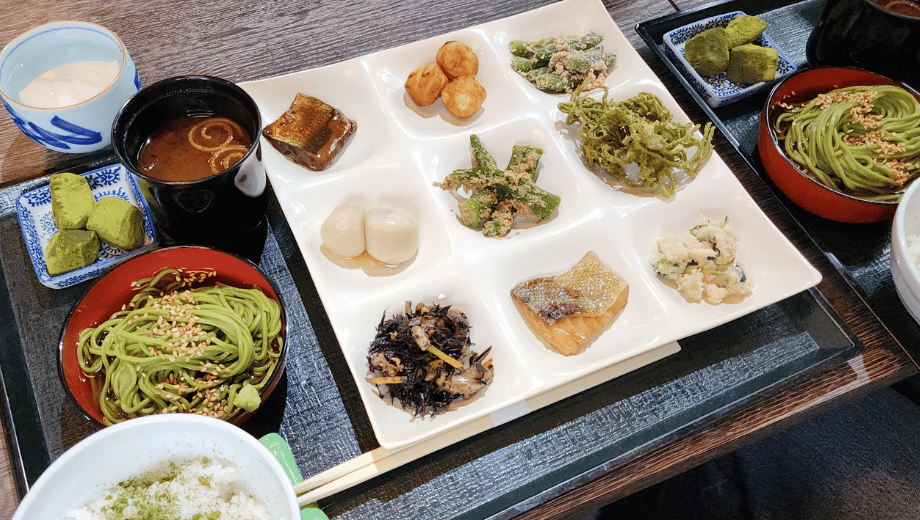
Try to find something that fits your dietary needs first, though, and minimize any asks. Also, fish broth and chicken broth are often used in vegetarian meals. We just accepted it and went with it.
Kyoto
By far our favorite spot. In retrospect, we could have spent a few more days there.
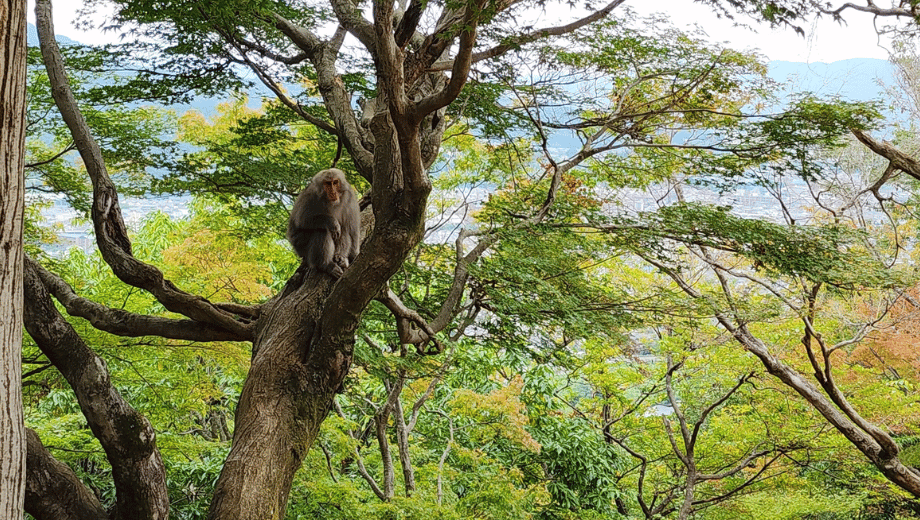
We did the Bamboo Forest, Inari Torii Gates, and Monkey Forest. All are touristy, but all are worth it. The monkeys are happy and free, yet they all choose to hang around a certain park area because the keepers give them snacks. Be mindful of the rules: they are wild animals and will bite or attack if provoked. The babies are adorable. Warning: the hike up the hill is very steep and will take about 25 minutes. Make sure to bring water, or buy some at the base. Going very early in the morning or late at night is a good idea to avoid the throngs of crowds.
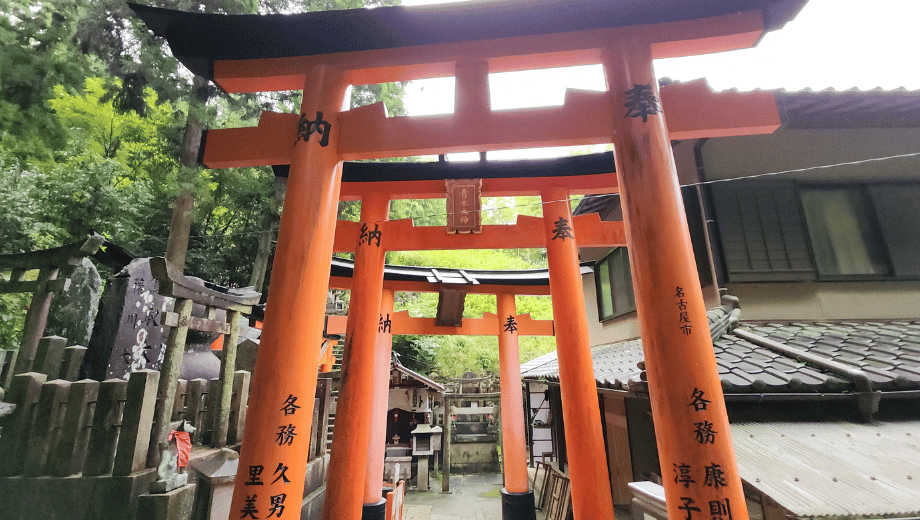
Photo tips for Bamboo Forest and Torii Gates: Go up as far as possible and then pull over to the side. Wait for gaps in the crowds and then take photos diagonally. This is the best way to get pictures without others in them!
Uji
Do take a trip to Uji and buy some fresh green tea matcha. The main streets near the river are very cute and have tons of nice shops.
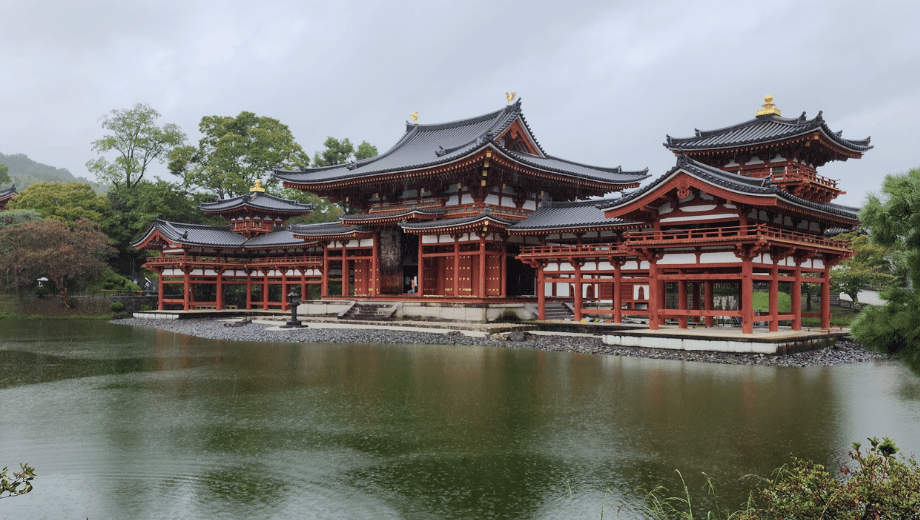
However, if you walk out of town, there are a handful of smaller, family-owned shops. The prices are a bit better, and you can see them grinding the tea. Don’t miss the stunning temples and shrines in the area as well. If you’re going to just visit one, I recommend the Byodoin Temple in Uji. They have a nice museum, the grounds are stunning and it’s a close distance to town.
Nara
Nara is definitely on the tourist circuit, but I did feel this was a worthwhile day trip out of Osaka. You could also get there from Kyoto easily. There are the infamous Nara deer everywhere in the park, temples and even surrounding city that will ‘bow’ in an attempt to get a treat.
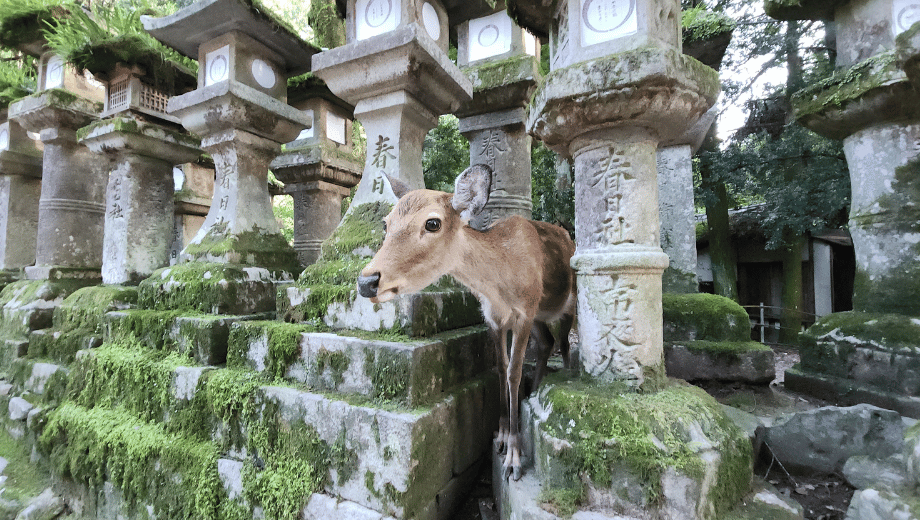
You may buy deer friendly crackers and feed the deer, but they can be aggressive. Some nip (not hard), but it may be not suitable for unattended children. I have dealt with aggressive deer before (weird flex?), so I knew what to expect and how to keep the treats hidden until I felt like doling them out.
Osaka
Osaka is crazy and fun, but it’s a lot. I felt like I needed a little break while in the midst of Dotonbori. Do eat some fresh Takoyaki (octopus balls) and other local snacks. In addition to tons of shopping, there are lots of Gachapon places (little plastic balls from a vending machine with a prize), thousands of fancy Claw Machines, and Pachinko halls!
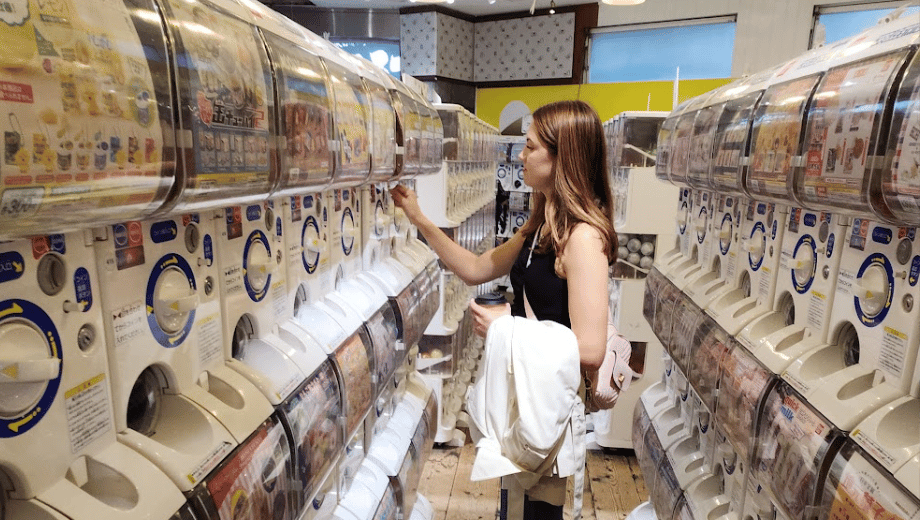
My daughter and I ended up collecting way too many Gachapons, and each have a little collection now that we carefully curated. It was also my first time playing Pachinko, and honestly, it was much more fun than I had expected.
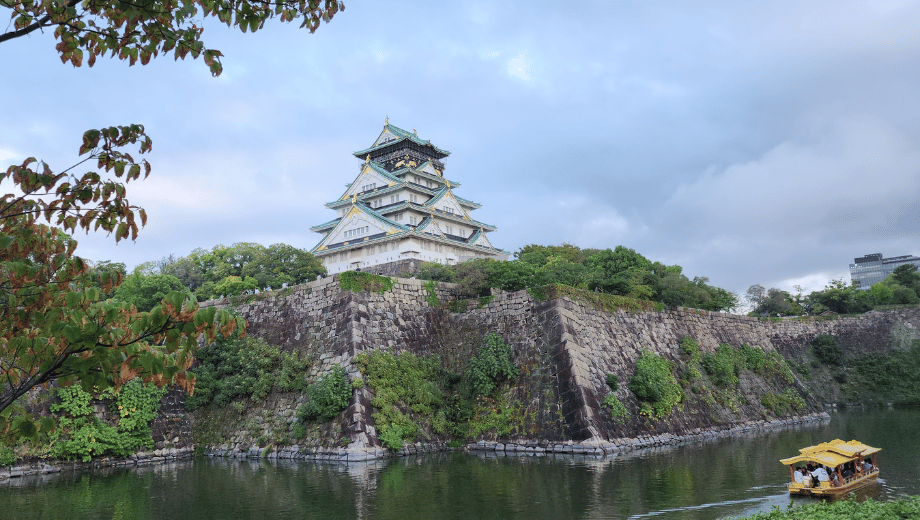
We stayed at the Doubletree near the Osaka Castle and it was a great launching point.
Pachinko is a Japanese mechanical game that resembles a cross between a pinball machine and a slot machine. Players purchase small steel balls, which are then shot into the machine. The goal is for the balls to fall into special catchment pockets, which trigger the machine to dispense more balls, which can then be exchanged for prizes or tokens. It’s a hugely popular form of casual gambling and entertainment in Japan, played in brightly lit and very noisy parlors.
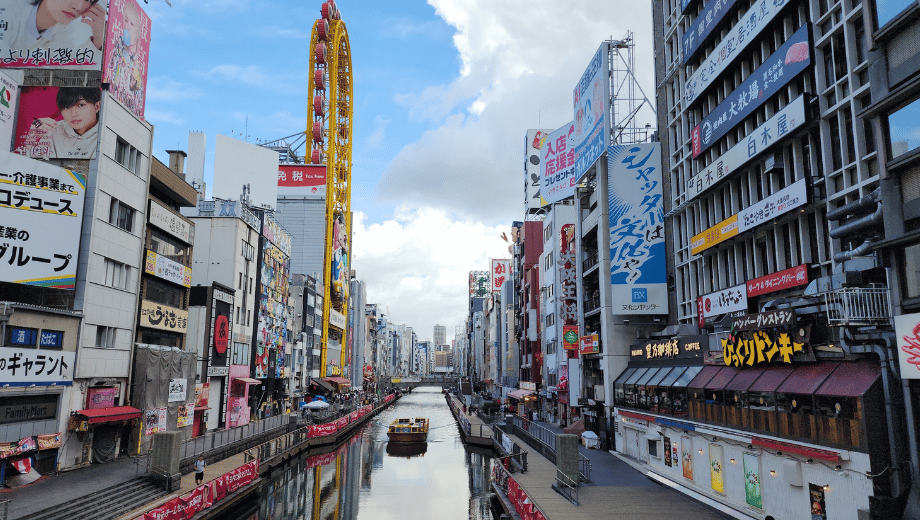
Friendly staff gave us guides to play, and when we were done, we were given tickets to grab a prize (we won cookies). Although the machines are bright and loud, most have controls on them so you can silence the machines and even the machine brightness. This is a nice “sitting” stop. Try it!
In general, Osaka was fun and a great launching spot, but in retrospect we would have preferred to stay in Kyoto for more days and do day trips from there.
Parks
There are stunning parks in every city, large or small, in Japan. These are often a free or low cost way to ‘take a break’.
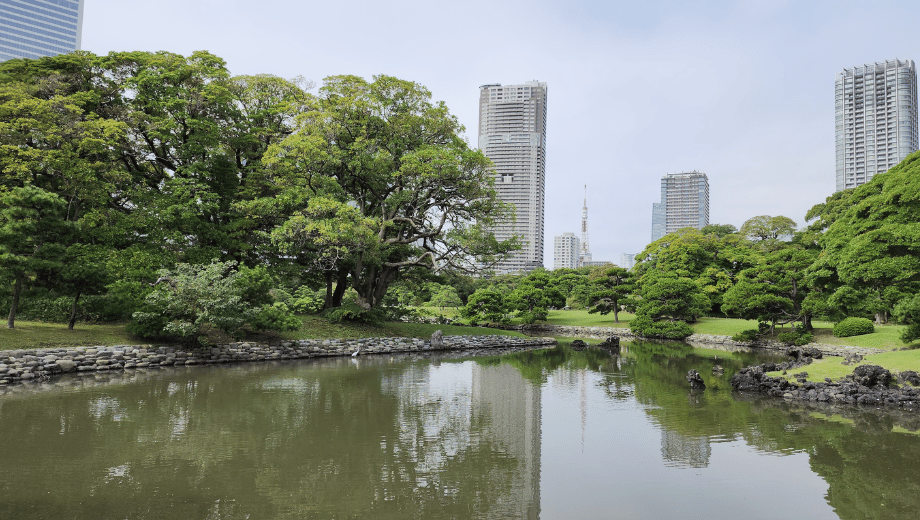
We walked through many such parks and gardens in Tokyo and Osaka, and they were a welcome oasis in a sea of activity. Also, to note, many temples and shrines in Japan are also free and some are open 24 hours a day.
Do Not Fear the Trains
I feel like Japan’s cities are loud, bright with lights, and full of lots and lots of people. So the quiet train was a place of peace, and I was happy to just be silent and finally collect my thoughts. DO take trains to neighboring cities. Use Google to find at least one or two things in each smaller town, and then don’t plan anything else. Simply wander and explore—I promise you’ll find surprising places, shops, food, and more. The Shinkansen trains were pricey, but by far one of my most favorite activities.
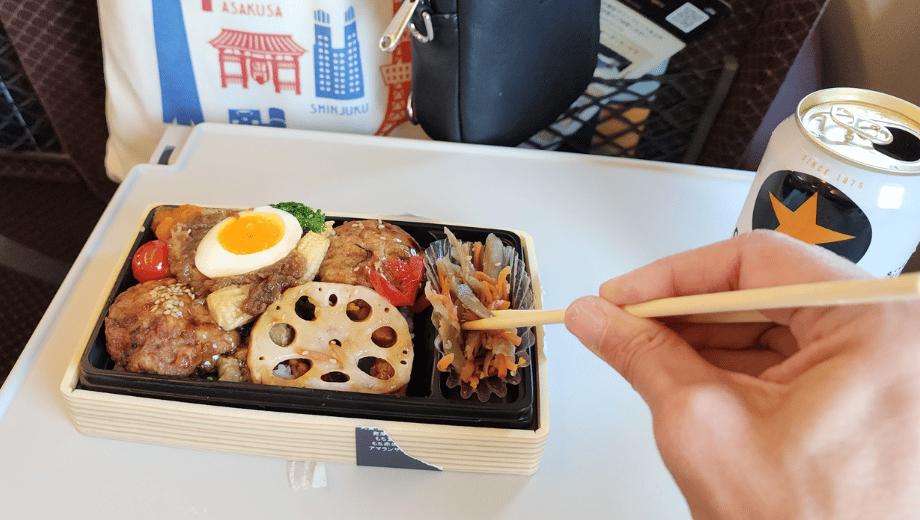
We reserved seats in the ‘Green Car’ with large comfortable seats and snacked on our gourmet bento boxes we picked up at the train station. You can even enjoy a beer or sake, but make sure to grab that at the station as well. I only saw one ‘bar cart’ girl over the course of 4 Shinkansen train rides.
Packing
We did the small suitcase packed inside a larger suitcase and used luggage forwarding from hotel to hotel. It was seamless and easy, and I think well worth the cost. However, for the longer trips (like Osaka to Tokyo), you will need a day for your luggage to arrive, so you’ll pack your items for the day in a backpack and head to the train station. Also, pack a plastic bag to keep your trash in. Trash cans are not really a thing in Japan. If you buy something at 7-11 or Lawson’s to snack on, you’ll have to carry around your trash for the day until you get back to your hotel. We were shocked to see how many convenience markets did not offer trash cans!
Make sure to pack Ziploc bags from home to seal up any liquids you may pick up – Sake, Skincare, etc. If you are buying tax free, they will seal the items in a plastic bag and you’re not to open them until you return home. We didn’t really pay attention on our first tax free buy, and we unpacked the bag to condense items. Spoiler alert: No one cared, no one ever checked. I mean the intent to use these items at home was still there, so not sure how much of an issue this could have been. I do know they don’t want people buying items and leaving the packaging/waste.

